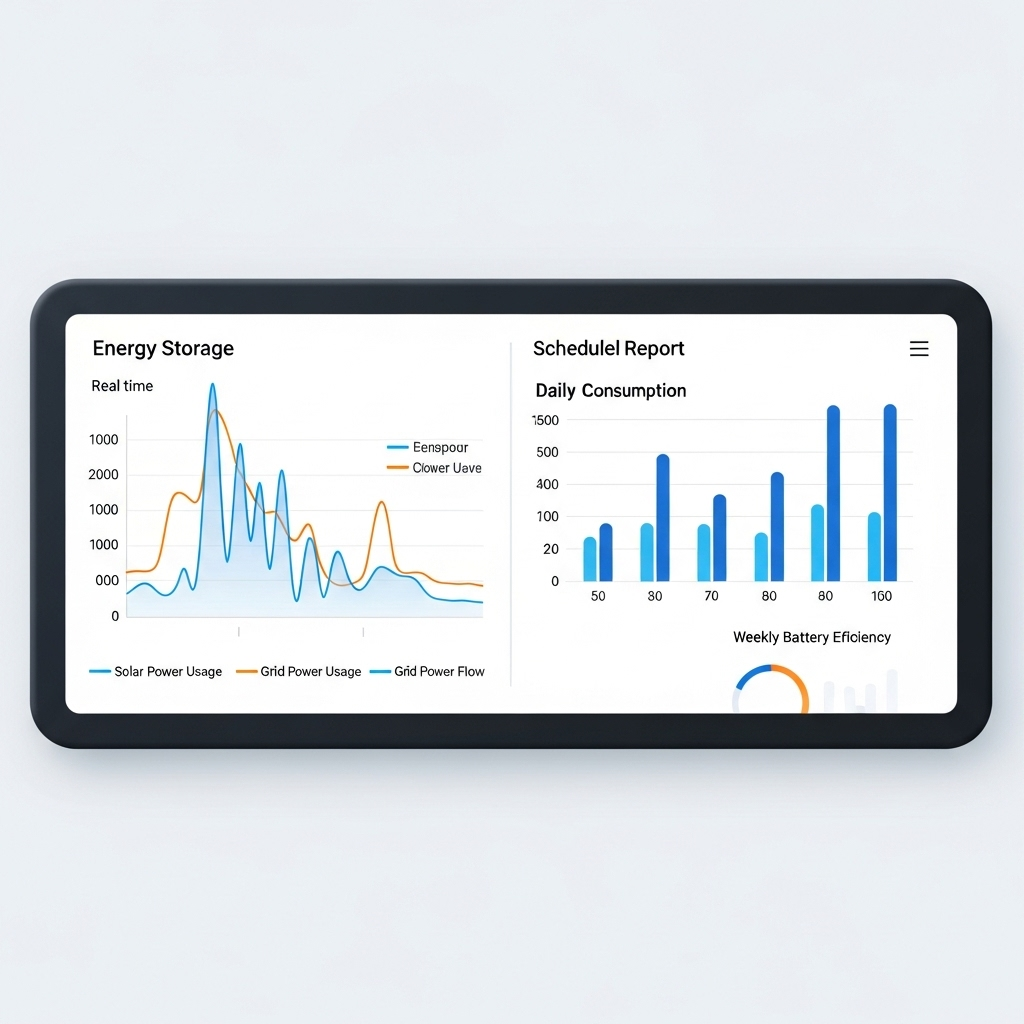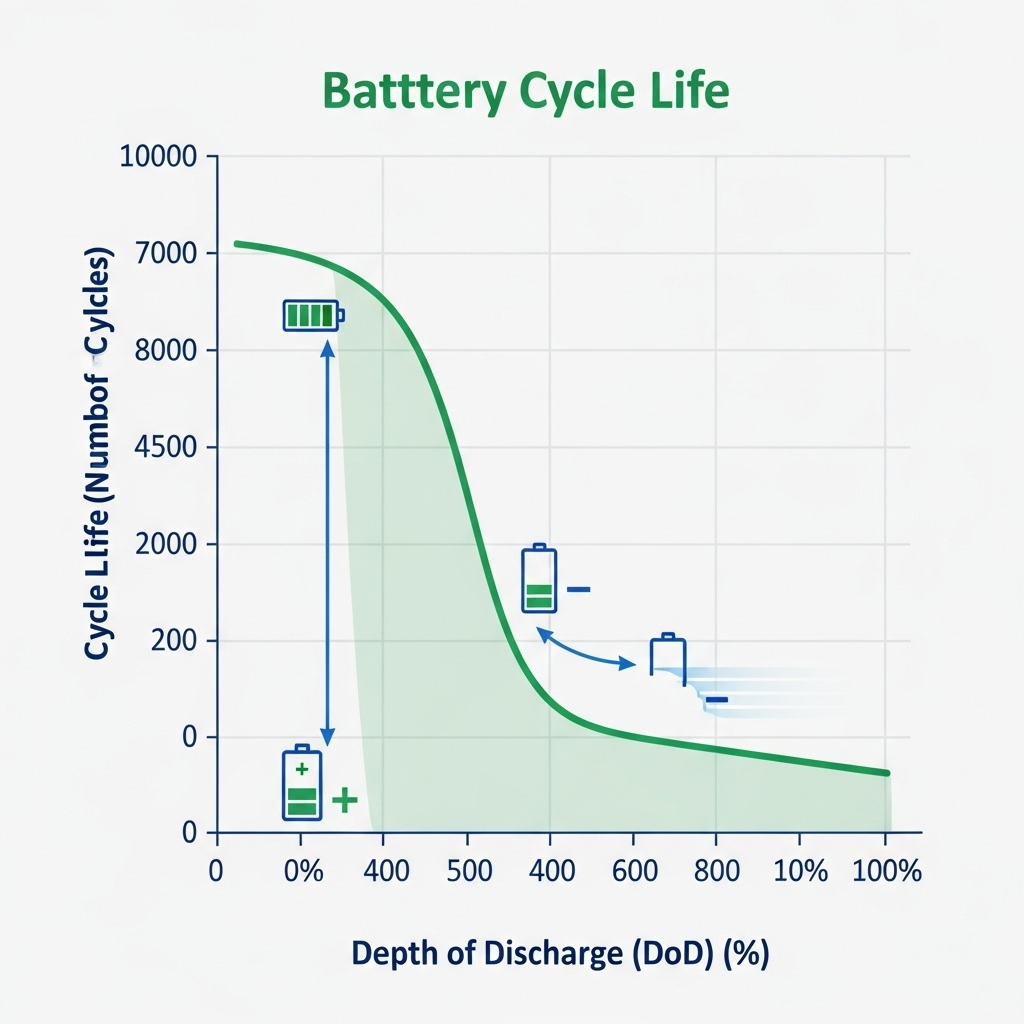A home battery is more than a backup power source; it's a significant investment in your energy independence. To protect this investment and ensure it operates at peak efficiency, a robust home battery monitoring strategy is necessary. Effective monitoring transforms your energy storage system from a passive device into an active asset. This guide provides a complete blueprint for residential battery management, taking you from the initial installation to achieving deep, actionable insights.
The Foundation: Pre-Installation and Initial Setup
The path to insightful battery performance tracking begins before the system is even fully operational. Proper planning and a methodical setup create the baseline for all future monitoring efforts.
Choosing a System with Transparent Monitoring
When selecting a home energy storage system, prioritize solutions that offer clear and accessible data. A system with a user-friendly interface and the ability to export data gives you greater control. According to the International Energy Agency, intelligent software is a key component that can interact with smart appliances to shape electricity consumption at the household level. Systems that provide real-time monitoring data on performance are crucial for maximizing power output and improving fault tolerance. This transparency is the first step in effective residential battery management.
The First 24 Hours: Calibration and Baseline
The initial charge and discharge cycles are critical for calibrating the battery management system (BMS). This process ensures the system's state of charge (SoC) readings are accurate. During this period, you should establish a baseline for performance. Record the initial round-trip efficiency and capacity metrics provided by your monitoring software. This baseline becomes the benchmark against which all future performance is measured, allowing you to spot degradation or potential issues early.
Core Metrics for Battery Performance Tracking
Once your system is running, focusing on the right metrics is key to understanding its health and efficiency. Going beyond the simple battery percentage provides a much clearer picture of your investment's performance.
Beyond State of Charge (SoC): Key Health Indicators
While SoC is the most visible metric, others provide deeper insights into your battery's long-term health. State of Health (SoH) is a measure of the battery's condition relative to its original capacity. Depth of Discharge (DoD) refers to the percentage of the battery that has been discharged relative to its total capacity. Consistently deep discharges can accelerate battery aging. Another vital metric is Round-Trip Efficiency (RTE), which measures the energy you get out for every unit of energy you put in. For a more detailed examination of these and other key figures, the Ultimate Reference for Solar Storage Performance offers a comprehensive overview.
Temperature and Environmental Factors
Temperature significantly impacts the performance and lifespan of LiFePO4 batteries. Most home battery systems perform best within a specific temperature range, typically between 68°F and 77°F (20-25°C). Your monitoring system should provide temperature data, and many advanced systems include thermal management to keep the battery within its optimal operating range. Monitoring these conditions helps prevent premature degradation and ensures both safety and longevity.
| Metric | Ideal Range | Warning Level | What It Indicates |
|---|---|---|---|
| State of Health (SoH) | > 95% | < 80% | Long-term capacity and lifespan. |
| Depth of Discharge (DoD) | Regularly < 80% | Consistently > 90% | Usage patterns affecting battery aging. |
| Operating Temperature | 15-25°C (59-77°F) | < 0°C or > 30°C | Environmental stress on battery health. |
| Round-Trip Efficiency (RTE) | > 90% | < 85% | Energy loss during charge/discharge cycles. |
From Raw Data to Actionable Insights
Collecting data is only half the battle. The real value of home battery monitoring comes from translating that data into actions that optimize your energy usage and save you money.
Understanding Your Energy Consumption Patterns
Your monitoring dashboard is a window into your home's energy habits. By analyzing historical data, you can identify peak consumption times. This insight allows you to shift the use of high-draw appliances, like washing machines or electric vehicle chargers, to periods when your solar panels are generating power or when your battery is full. This practice, known as load shifting, increases your solar self-consumption and reduces reliance on the grid.
Setting Up Alerts and Notifications
Modern monitoring systems can move you from passive observation to proactive management. Configure your system to send alerts for specific events, such as a sudden drop in SoH, critically low SoC, or temperature anomalies. These automated notifications allow you to address potential problems before they escalate, protecting your hardware and ensuring the system operates reliably.
Advanced Residential Battery Management
With a solid understanding of your system's performance and your home's consumption patterns, you can employ more advanced strategies to maximize the value of your energy storage system.
Leveraging Time-of-Use (TOU) Rates
If your utility provider offers Time-of-Use (TOU) pricing, your battery becomes a powerful tool for cost savings. Program your system to charge from the grid during off-peak hours when electricity is cheapest. Then, during expensive peak hours, you can discharge the battery to power your home, avoiding high utility rates. This strategy, known as energy arbitrage, can significantly reduce your electricity bills. *Disclaimer: This information is for educational purposes and does not constitute financial advice. Consult with a qualified professional before making decisions based on utility rate structures.*
Integrating with Your Smart Home Ecosystem
The future of residential energy management lies in integration. Many advanced battery systems can connect with smart home platforms. This allows for automated control where, for instance, your system can signal smart appliances to run when there is excess solar power. As noted in a report by the Clean Energy Innovation from IEA, this level of integration creates a truly intelligent and efficient home energy ecosystem.
Putting Your Monitoring Blueprint into Action
Transforming your home battery from a simple storage unit into a dynamic energy management hub is achievable with the right monitoring blueprint. By starting with a solid foundation, tracking the right metrics, and using data to inform your actions, you gain complete control over your energy. This proactive approach not only protects your hardware but also maximizes your financial returns and accelerates your journey toward energy independence. Furthermore, as the energy landscape evolves, well-monitored battery systems are becoming essential for grid stability. A report from the Grid Codes for Renewable Powered Systems by IRENA highlights how battery storage can provide services like fast frequency response, underscoring their growing importance in a renewable-powered future.
Frequently Asked Questions
How often should I check my home battery's performance?
While daily checks are not necessary, it's good practice to review your system's performance dashboard weekly. This allows you to spot any developing trends or anomalies. You should rely on automated alerts for any immediate, critical issues.
What is the most important metric to monitor for a home battery?
While State of Charge (SoC) is important for daily use, State of Health (SoH) is arguably the most critical long-term metric. SoH gives you the best indication of your battery's lifespan and when it might need replacement.
Can I monitor my battery system if my internet goes down?
This depends on the system. Many systems offer a local monitoring option, either through a direct connection (like Bluetooth) or a local web interface that does not require an internet connection to view basic data. However, cloud-based historical data and remote access will be unavailable until the connection is restored.





Leave a comment
All comments are moderated before being published.
This site is protected by hCaptcha and the hCaptcha Privacy Policy and Terms of Service apply.